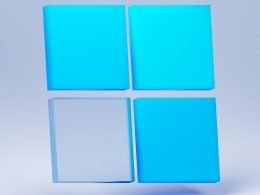There are several key steps to develop custom software solutions for Windows PCs. The process to build Windows-compatible software applications can be a fairly complex, challenging, and tedious. After all, software engineers must understand a wide-range of principles to design, develop, deploy, and distribute Windows products successfully. As a software developer yourself, building your own application can help foster constant innovation and establish a competitive advantage for your personal brand. Plus, these tactics help you maximize your earning potential, unleash your creativity, and challenge yourself with a continuous learning curve. To help you get started, read on to learn how to develop custom software solutions for Windows PCs.
Generate A Software Product Idea
First off, generate an innovative software product idea for your Windows PC application. To come up with a great software idea, try and focus on a real-world problem, user pain point, or common need. In addition, carefully analyze some of the most popular commercial software vendors that are currently on the market. Afterwards, try and list out all the possible solutions on an organized list. Try and sort all of these solutions out by priority, so that you can easily narrow everything down. With all these preparatory steps taken, you can begin collecting feedback, asking questions, and diving deeper. This way, it will be easy to make a strategic decision. Surely, generate a creative software product idea for your custom Windows application.
Set Up Your Development Environment
Once you have created an innovative, profitable idea for your Windows software application, you can set up your development environment. Start off by verifying your system requirements. For Windows app development, you’ll need to use either Visual Studio or Windows app software development kit (SDK). Then, implement a NuGet Package source, which is enabled for the official service index. Once all these preparatory measures are taken, you can enable your programming device for development. Afterwards, register yourself as an app developer. This is essential so you can submit finished applications to the Microsoft Store. Before you start programming, you should also think about the best ways to protect against security threats throughout your system. Certainly, development environment construction is vital to build software applications for Windows PCs.
Integrate Powerful Development Tools
Now, you are ready to integrate powerful development tools, programming resources, and supporting solutions. When choosing tools, developers choose between GitLab vs JFrog. In fact, many expert developers combine their chosen version control system (VCS) with the software delivery knowledge and binary management solutions that JFrog offers. Adopting these tools, you can release programs faster, optimize release staging, and simplify complex pipelines. Plus, these tools offer advanced functionality to enhance your continuous integration (CI) and delivery (CD) creation. Indeed, tools integration is a critical step to develop custom software solutions for Windows PCs.
Create A Prototype
At this point, it is time to create an initial protype for your Windows custom software application. Essentially, this will serve as a basic program that showcases the overall functionality, capabilities, and designs you are looking to achieve. Prototypes are known to be quick programs. Therefore, do not spend too much time creating your first version. Of course, you will likely need to continuously revisit, modify, and optimize it before your product is delivered. Similarly, your prototype will likely change at numerous points throughout your software development life cycle (SDLC). After all, you will constantly come up with new ways to address new problems or optimize your system’s abilities.
Conduct In-Depth Software Testing
Before you can release your application, you need to conduct in-depth, comprehensive software product testing. Start off with basic functionality testing. This will help you assure that every feature, element, button, and screen work as intended. Also, ensure that your system is capable of performing without crashing. Then, conduct a code review. Essentially, this involves getting another knowledgeable pair of eyes to review your written code. Oftentimes, this can uncover a wide range of potential problems. Definitely, conducting testing is vital to build a software application from scratch. There are several critical steps to design, develop, and deploy custom software solutions for Windows PCs. First and foremost, come up with a unique, memorable, and profitable software product idea. Then, set up a development environment to build your software within. Once you have your environment configured, integrate the latest tools, resources, and technologies. For example, advanced binary management solutions reduce risks with the continuous integration and delivery process. At this point, it is time to create a prototype for your software solution. Follow the points highlighted above to learn how to develop custom software solutions for Windows PCs.










